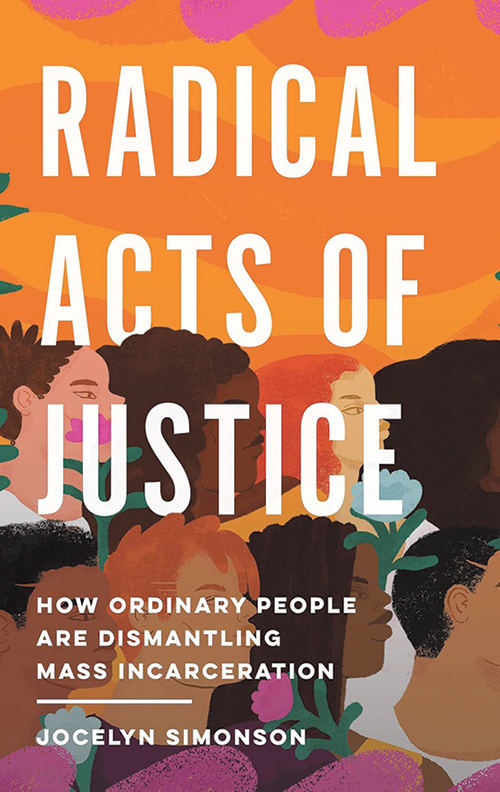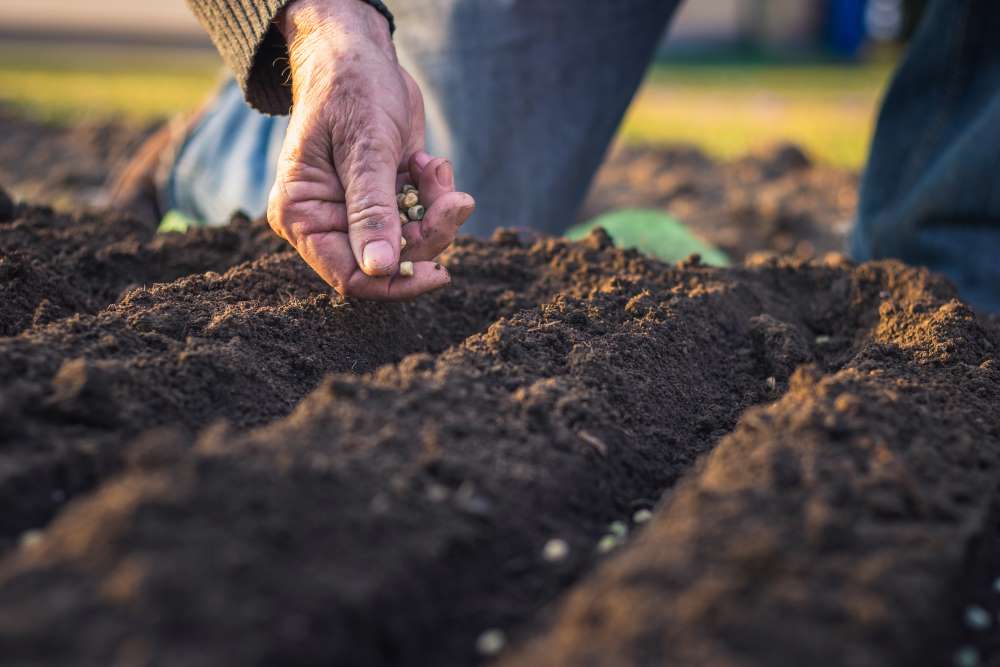
Radical Acts of Justice: How Ordinary People Are Dismantling Mass Incarceration
Reviewed by Michele Sands
April 1, 2024
By Jocelyn Simonson. The New Press, 2023. 256 pages. $27.99/hardcover or eBook.
Radical Acts of Justice is both a hopeful and a helpful look at mass incarceration in the United States. Jocelyn Simonson, a former public defender and current legal scholar and professor, explores tactics of hundreds of community groups and individuals, within the penal system and without, to reveal injustices and to imagine a new form of public caring when someone is wronged. With a wealth of examples gleaned throughout the country, the book focuses on four interconnecting approaches that ordinary people can and have taken: bail funds, court watching, participatory defense, and budgets.
But first Simonson defines the surface and depth of everyday Law and Order courtroom drama. “The People” bring the charges, are being protected, and appear to be on the side of what is right and just. But are they us, the community, or is this naming a way to set races, classes, and neighborhoods against each other? How is justice served if an individual is put in a cage, a family decimated, a community ravaged, and the public left with continued violence? (I admit to shock the first time the author used “caged” for imprisonment, but as facts and real people’s stories compounded, it seemed the right word choice; I use quotes throughout this review to show how the author asks us to reflect on ordinary words.) Why is “safety” defined as funding the prison system, when surveys find that most people want healthcare, jobs, and education to feel safe, not more prisons built?
Bail, by law, can only be set to secure a person’s coming to court for trial. In reality, bail is set impossibly high as an incentive to plead guilty, to force imprisonment as a punishment, and to show that the public is being “protected.” In 2022, over 400,000 innocent people, mostly men of Color, were held in jail waiting for trial. Most were held for months, some for years, because they could not pay bail: bail set by a judge within a matter of minutes; often via video; and mostly for misdemeanors, unpaid fines, or traffic violations. Bail funds were originally set up for individuals; community bail funds for “strangers” became prevalent this last decade, posting bond for anyone in their neighborhood unable to afford it and so stay out of jail. The tactic worked: virtually all those sent home to await trial returned to court—and held on to their jobs and families. Indeed, after a six-year campaign in Illinois, a law was signed in 2021 to end money bail in that state. Bail funders support strangers, because the system is wrong, not the individual.
Court watchers sit in court to let the judge and lawyers know that “the People” are present and the community cares. While the Sixth Amendment guarantees the right to a public trial, courts are more used to audiences than to observers of how the stranger in our midst is being treated. Watchers wade through the court jargon and myriad of court workers; take notes; and report to their hub, social media, and the court. Often the statistics (demographics, charge, support, sentence, rationale for sentence, minutes spent in trial, minutes spent waiting, postponements, etc.) gathered by these groups are the only ones available in the local legal system.
Once injustices are seen, the observers want to do more, and so participatory defense groups have evolved. These volunteers help overworked public defenders; gather background information on the defendant, often producing scrapbooks and videos; find drug or mental health programs; keep the family informed; provide transportation to and from court; and, on occasion, show up in numbers, making it the “People’s Court.” One night a Court Watch New York City member saw a Black nurse, Tracy McCarter, who was accused of killing her abusive husband, sent to Rikers Island for six months. For two and a half years, until the case was finally dropped, the group supported McCarter with rallies, electioneering, and legal aid.
Out of domestic abuse survivor cases like McCarter’s came further criminalization: the abuser should be caged rather than help provided for the whole family. Which of these alternatives is better for public safety? Better for the government budget? And so budgeting groups have shot up—from Defund the Police to inmates researching the needs of the neighborhoods they hope to see again to citizen house parties from Nashville to Seattle—all researching, surveying, and organizing for people’s budgets. Two numbers popped out to me: 54 percent of the Los Angeles, Calif. proposed budget in 2020 was for law enforcement; the city of Seattle, Wash., budgeted $900 million for prison construction. How many restorative practices implemented in schools, how many Alternatives to Violence sessions, how many neighborhood mental health clinics could be funded with this money? While backlash setbacks are usual, Simonson points to hearts and minds being changed by these budget revelations.
Ordinary individuals and Quaker working groups who question and want to counter the existing justice system will find this book an informative, instructional, and inspirational resource. Well-documented by law journals, local media, and personal interviews, it refers to American Friends Service Committee’s organizing manual on community bail funds but not the Maryland Alliance for Justice Reform, also a valuable resource with Quaker involvement. To the many questions the author raises, I add a query: As Jesus of Nazareth confronted the order of his society, how do we deal with a law and order system of mass incarceration that erodes the Thirteenth Amendment?
Michele Sands continues to worship with Upper Susquehanna Quarterly and at Collington, a Kendal-affiliated retirement community in Prince George’s County Md., where she recently observed its circuit court.



Comments on Friendsjournal.org may be used in the Forum of the print magazine and may be edited for length and clarity.